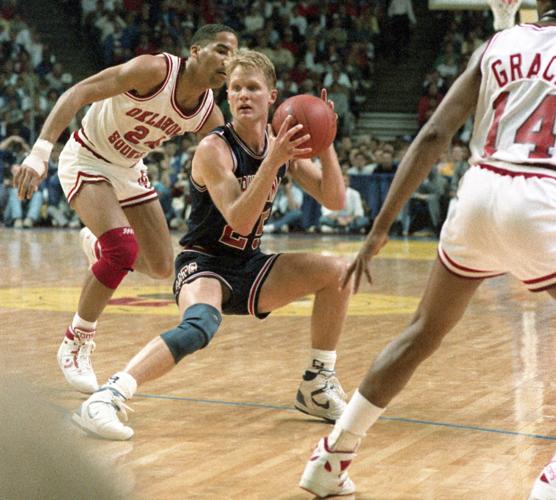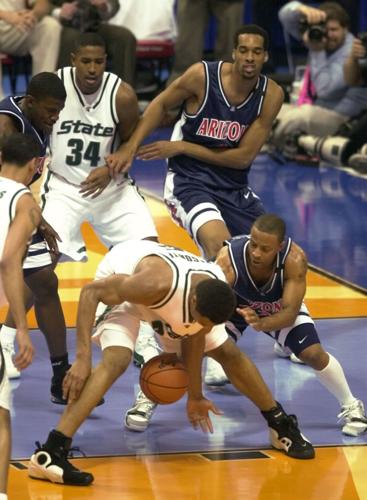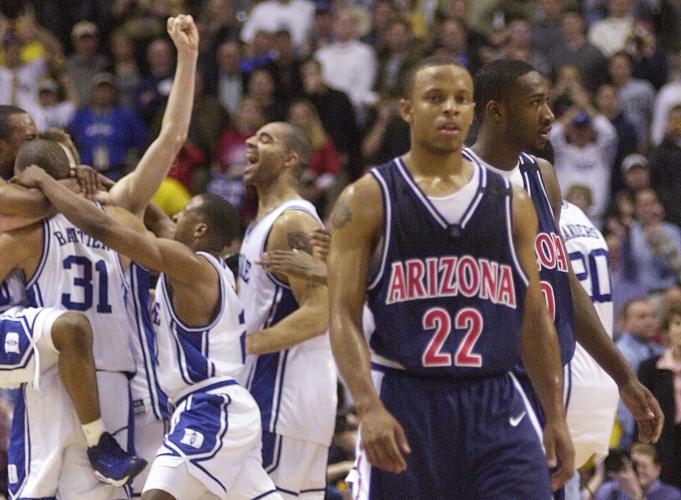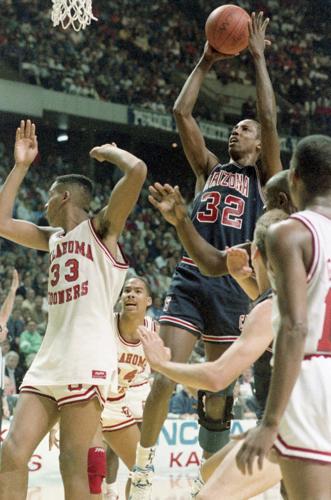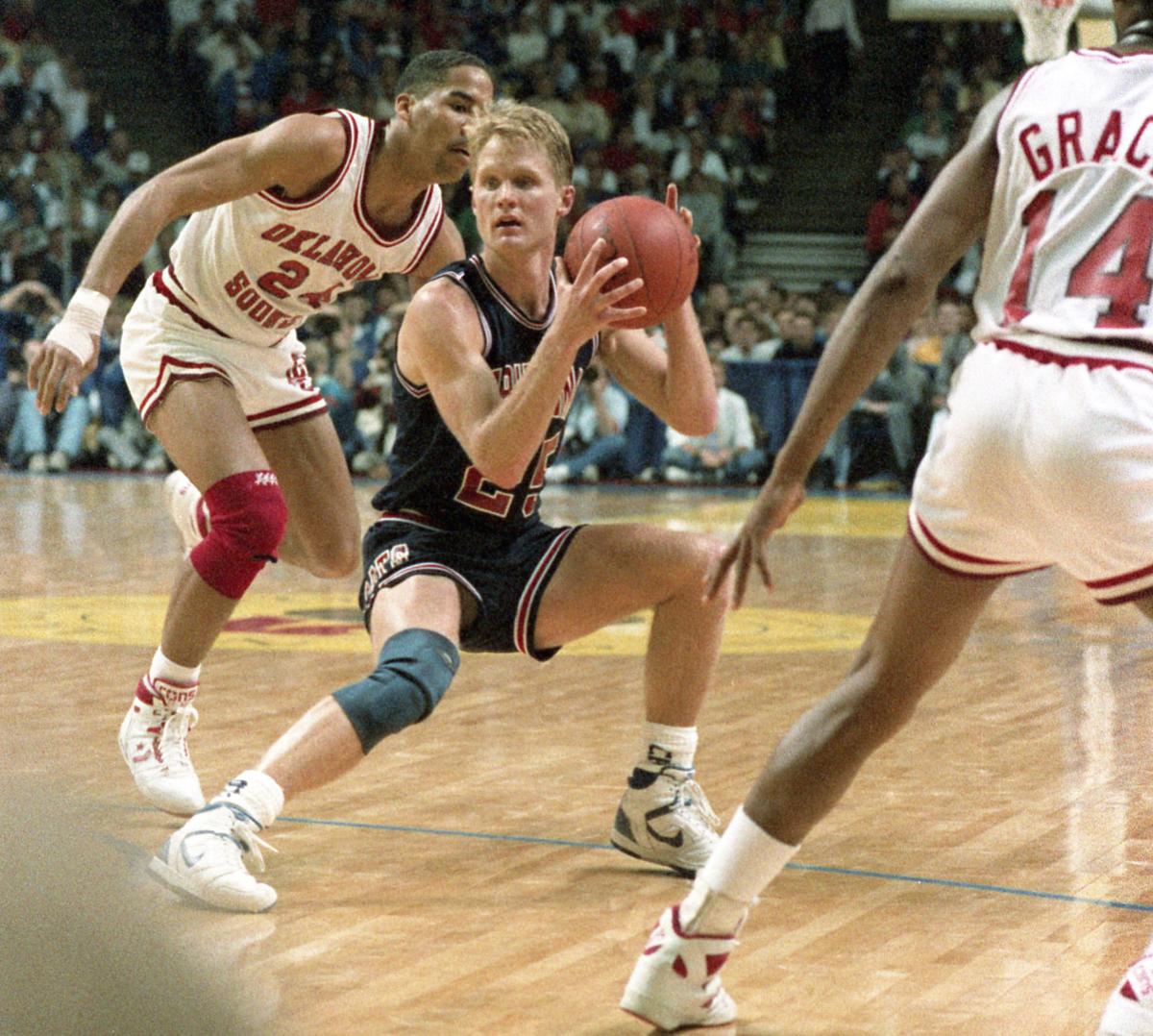Playing in the Final Four was once a pipe dream for Steve Kerr.
When Kerr was recruited to play for Arizona in 1983, the Wildcats were fresh off a 4-24 season and the only win in Pac-10 play was a one-point victory against Stanford. Before then, the UA had lost 15 games in a row.
Then Lute Olson replaced Ben Lindsey as coach and the UA overhauled its roster. Five years later, in 1988, the Wildcats were on college basketball’s biggest stage.
At the time, Kerr called it “unbelievable.”
“Ever since I was old enough to watch it on television, I’ve dreamed about being in the Final Four,” Kerr said. “Considering our position at Arizona five years ago, this was something as far off as anything I could think of. It’s the greatest feeling of my life.”
The Wildcats’ first Final Four game took place on this date, April 2. Here’s a look at that game, and others, from a busy day in UA basketball history:
Wildcats stumble in first Final Four
What: No. 1 seed Arizona vs. No. 1 seed Oklahoma in the Final Four
When: April 2, 1988
Where: Kemper Arena, Kansas City, Missouri
What went down: Oklahoma’s frontcourt duo of Stacey King and Harvey Grant combined for combined for 42 points and 16 rebounds as the Sooners beat the UA 86-78.
The Sooners put the clamps on Kerr’s shooting while letting Sean Elliott, the UA’s top player, score at will. Their reasoning?
“Their coach said Kerr was the glue. He was the man we had to stop,” Oklahoma’s Mookie Blaylock said. “We were always aware of where he was.”
Kerr shot 2 of 12 from 3-point range and was 2 of 13 (15.4%) overall from the field.
“I made about 30 in a row in warmups,” Kerr said. “Maybe I used them all up. I felt very comfortable with the building. I liked the place, but it didn’t like me.”

Sean Elliott had 31 points and 11 rebounds in the Wildcats’ 86-78 loss to Oklahoma in the 1988 Final Four.
Elliott dropped 31 points and grabbed 11 rebounds. Anthony Cook (16 points, 11 rebounds) and Tom Tolbert (11 points, 13 rebounds) also recorded double-doubles in the loss.
Grant and King were too much for the Wildcats to handle.
Grant said OU treated the national semifinal as their championship game.
“I figured if we beat Arizona, we beat the best,” Grant said.
What happened next: Oklahoma fell to sixth-seeded Kansas 83-79 in the national title game.
Arizona falls to Duke in championship game
What: No. 2 seed Arizona vs. No. 1 seed Duke in the national championship game
When: April 2, 2001
Where: The Metrodome, Minneapolis
What went down: Olson made a bold statement after the Wildcats’ 19-point win over Michigan State in the Final Four.
“I’ve said all along this is the most talented team we’ve had at Arizona,” Olson said. “It’s just a matter of them leaving their egos at the door. This team has become as closely knit as any I’ve had at Arizona.”

Arizona routed defending national champion Michigan State in the Final Four in 2001 to set up a title game against Duke.
Arizona’s 2001 team had more NBA players — Gilbert Arenas, Richard Jefferson, Luke Walton and Loren Woods — than the 1997 national champions, after all.
The UA had one final test against top-seeded Duke, which had Naismith Player of the Year and Associated Press Player of the Year Shane Battier along with future pros Mike Dunleavy, Jay Williams and Carlos Boozer.
Arizona was loaded. Duke was loaded.
The Wildcats trailed 35-33 at halftime, but impressive performances by Dunleavy, Battier and Williams allowed the Blue Devils to hang on for an 82-72 win. Dunleavy poured in 21 points on 5-of-9 shooting from 3-point range, Battier added 18 points, 11 rebounds and six assists, and Boozer produced his first double-double of the tournament with 12 points and 12 rebounds. Duke’s offensive game plan was a perfect blend of playing inside-out.
“We’d rush to collapse and then Dunleavy would hit 3s. … We couldn’t stop what they were doing,” Arenas said. “They penetrate and dish. That’s their whole offensive game. We’d break down on a play and they’d make us pay with a 3.”
Arenas also said the Blue Devils “were just stronger than we were.”
“I think our guys played hard down the stretch. It was (Duke’s) ability to make plays that made the difference,” he said.

Jason Gardner helped lead the Wildcats to the 2001 Final Four in Minneapolis. The UA beat Michigan State in the semifinal but fell to Duke in the championship game.
Woods finished with 22 points and 11 rebounds, and Jefferson had 19 points and eight rebounds.
Arizona ended the season with a 28-8 record and the distinction of being one of just two Wildcats teams to play for a national title.
“Fans can react to this game and this season any way they want, but the people in this (locker) room will remember it as one of the best years of their lives,” Woods said.
What happened next: UA fans rioted in Tucson after the loss, torching two cars and a motor home. Police, dressed in protective riot gear, fired off rubber bullets and tear gas to break up the frenzy on Fourth Avenue.


